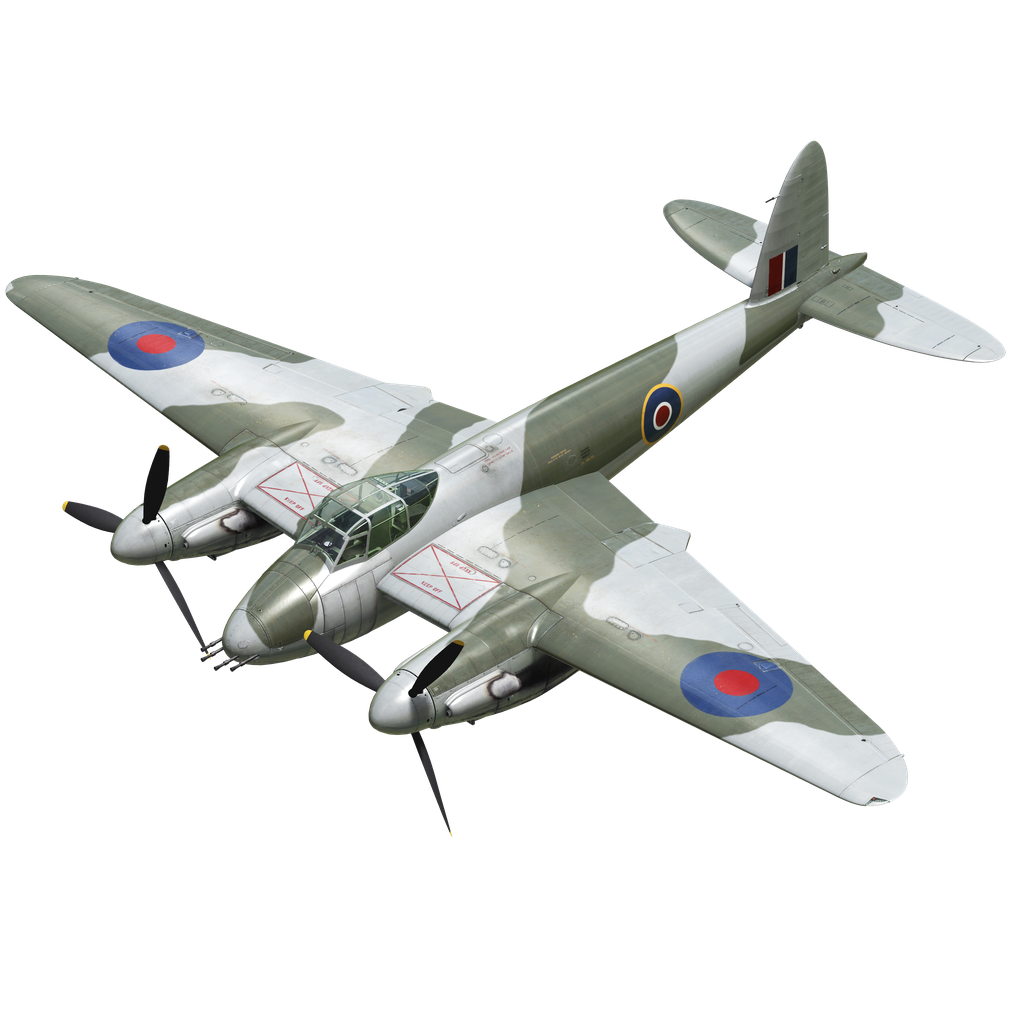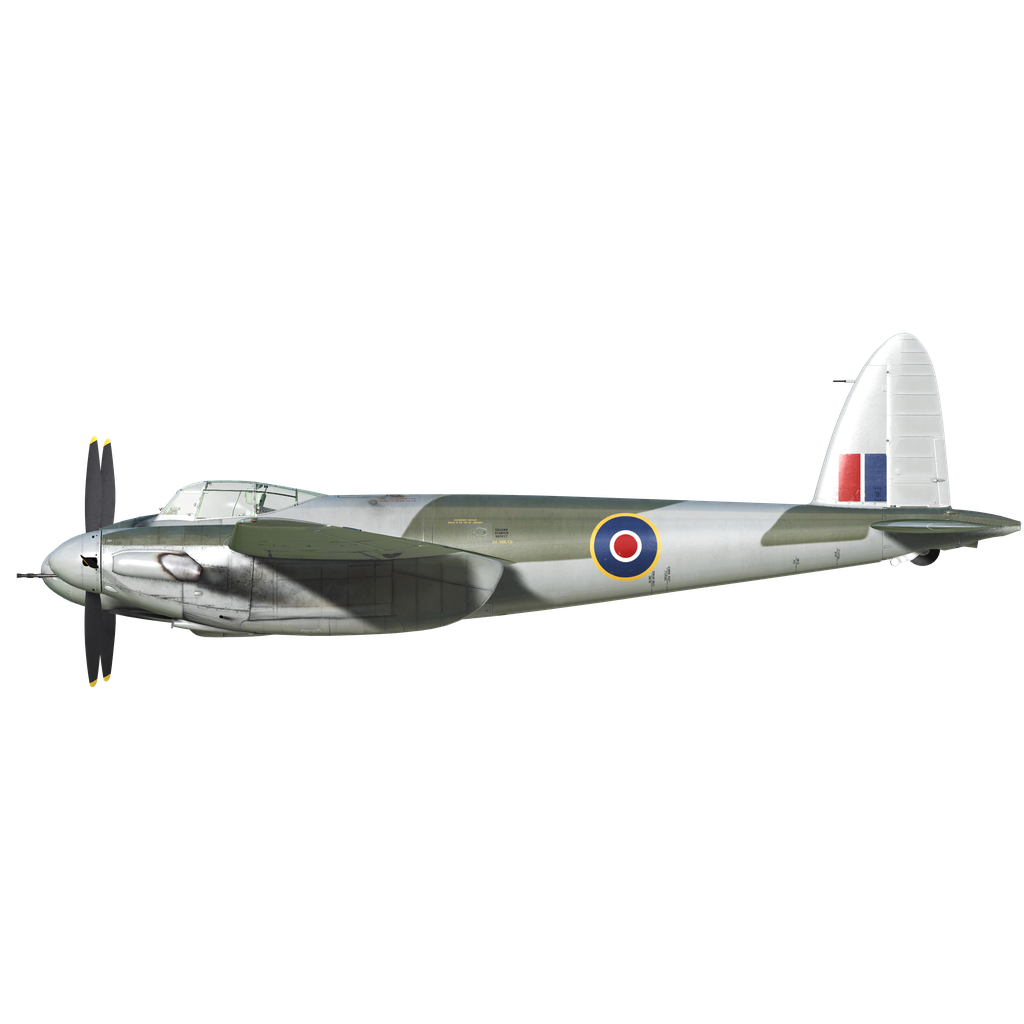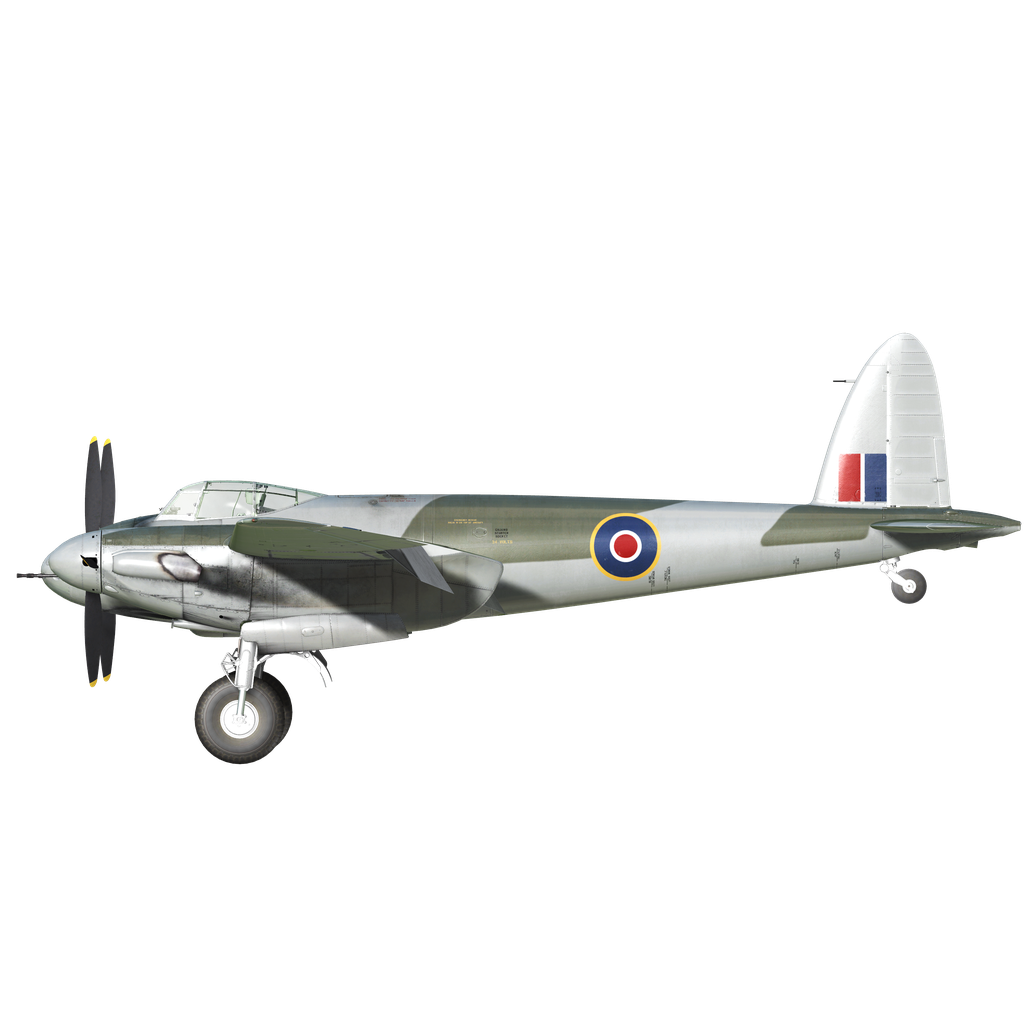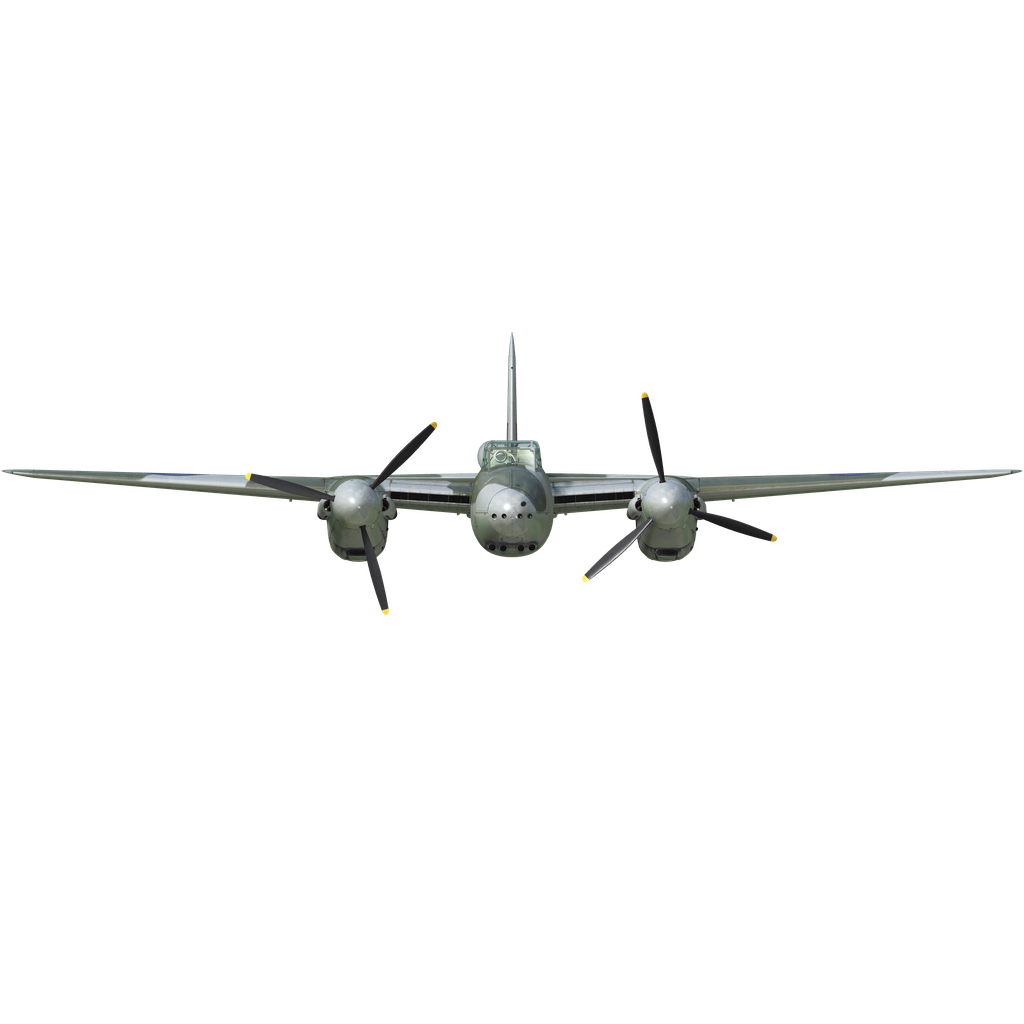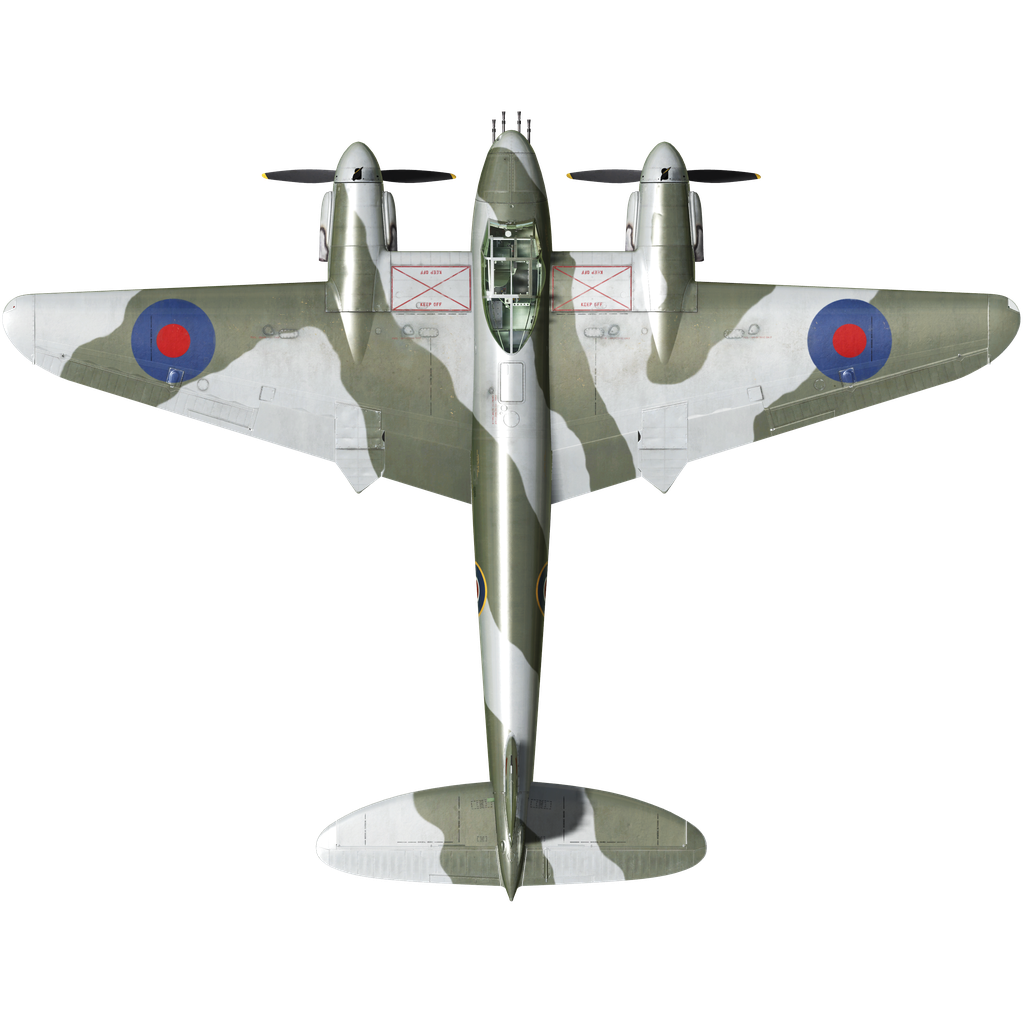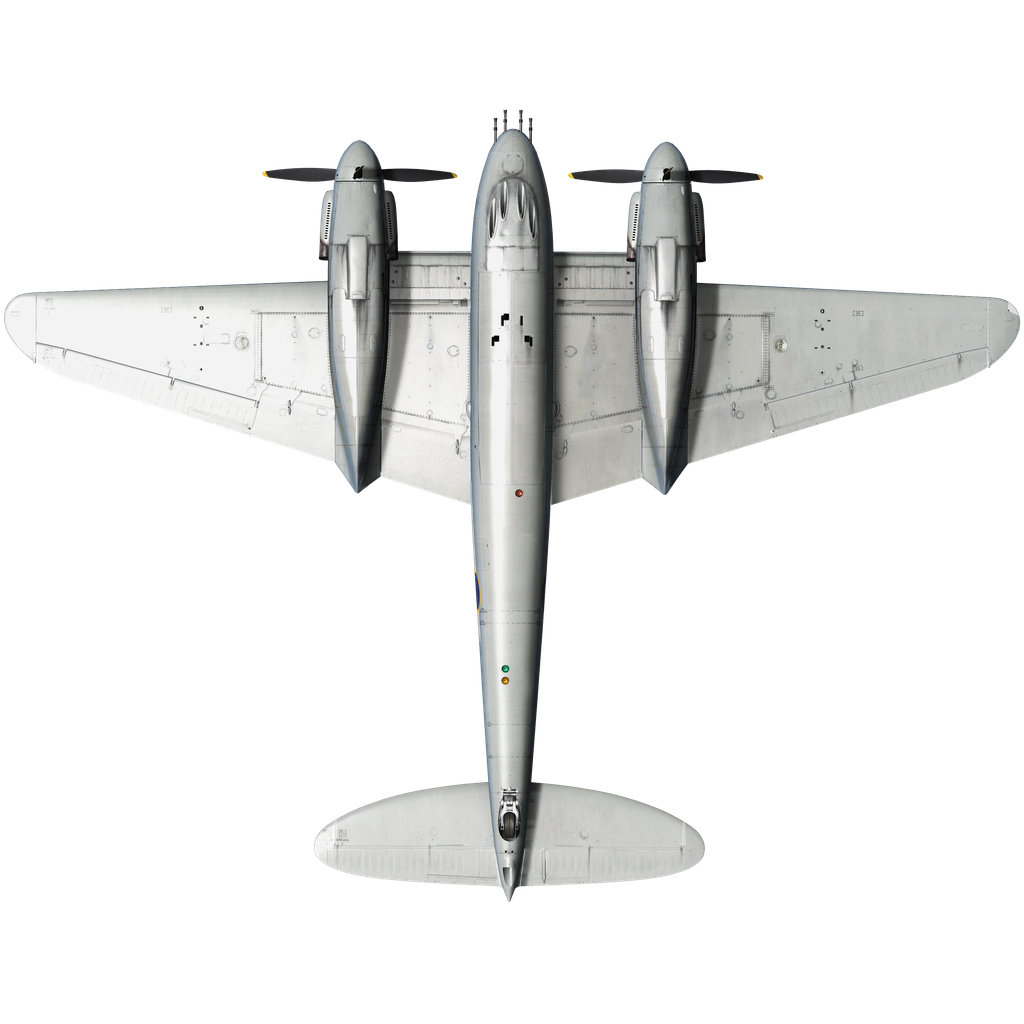Indicated stall speed in flight configuration: 179...208 km/h
Indicated stall speed in landing configuration: 157...183 km/h
Dive speed limit: 690 km/h
Maximum load factor: 8.0 G
Stall angle of attack in flight configuration: 18.3 °
Stall angle of attack in landing configuration: 15.3 °
Maximum true air speed at sea level, 3000 RPM, boost +25: 598 km/h (modification)
Maximum true air speed at sea level, 3000 RPM, boost +18: 548 km/h
Maximum true air speed at 2000 m, 3000 RPM, boost +18: 577 km/h
Maximum true air speed at 3900 m, 3000 RPM, boost +18: 603 km/h
Service ceiling: 8700 m
Climb rate at sea level: 9.4 m/s
Climb rate at 3000 m: 9.8 m/s
Climb rate at 6000 m: 6.7 m/s
Maximum performance turn at sea level: 26.4 s, at 270 km/h IAS.
Maximum performance turn at 3000 m: 35.5 s, at 270 km/h IAS.
Flight endurance at 3000 m: 5.3 h, at 300 km/h IAS.
Takeoff speed: 200...230 km/h
Glideslope speed: 200...240 km/h
Landing speed: 150...175 km/h
Landing angle: 13.0 °
Note 1: the data provided is for international standard atmosphere (ISA).
Note 2: flight performance ranges are given for possible aircraft mass ranges.
Note 3: maximum speeds, climb rates and turn times are given for standard aircraft mass.
Note 4: climb rates are given for 2850 RPM and boost +9, turn times are given for 3000 RPM and boost +18.
Engine:
Model: Merlin 25
Maximum power in Take-off mode (3000 RPM, boost +18, low gear) at sea level: 1620 HP
Maximum power in Climb mode (2850 RPM, boost +9, low gear) at 9250 feet: 1210 HP
Maximum power in Climb mode (2850 RPM, boost +9, high gear) at 16000 feet: 1135 HP
Maximum power in Combat mode (3000 RPM, boost +18, low gear) at 2000 feet: 1640 HP
Maximum power in Combat mode (3000 RPM, boost +18, high gear) at 9500 feet: 1500 HP
Maximum power in Combat mode (3000 RPM, boost +25, low gear) at sea level: 1950 HP (modification)
Maximum power in Combat mode (3000 RPM, boost +25, high gear) at 4000 feet: 1800 HP (modification)
Engine modes:
Max Cruising power (unlimited time): 2650 RPM, boost +7
Climb power (up to 1 hour): 2850 RPM, boost +9
Combat power (up to 5 minutes): 3000 RPM, boost +18
Combat power (up to 5 minutes): 3000 RPM, boost +25 (modification)
Water rated temperature in engine output: 60..125 °C
Water maximum temperature in engine output: 135 °C
Oil rated temperature in engine intake: 15..90 °C
Oil maximum temperature in engine intake: 105 °C
Supercharger gear shift altitude: automatic with possibility of manual switch to low gear
Empty weight: 6676 kg
Minimum weight (no ammo, 10% fuel): 7463 kg
Standard weight: 9026 kg
Maximum takeoff weight: 10194 kg
Fuel load: 1479.1 kg / 2060 l / 453 gallons
Maximum useful load: 3518 kg
Forward-firing armament:
4 x 7.7mm machine gun "Browning .303", 500 rounds per gun, 1150 rounds per minute, nose-mounted
4 x 7.7mm machine gun "Browning .303", 780 rounds per gun, 1150 rounds per minute, nose-mounted (modification)
4 x 20mm gun "Hispano Mk.II", 150 rounds per gun, 650 rounds per minute, nose-mounted
4 x 20mm gun "Hispano Mk.II", 175 rounds per gun, 650 rounds per minute, nose-mounted (modification)
2 x 7.7mm machine gun "Browning .303", 500 or 780 rounds per gun, 1150 rounds per minute, nose-mounted (modification)
57mm gun "Molins Class M", 25 rounds, 55 rounds per minute, nose-mounted (modification)
Bombs:
Up to 2 x 250 lb general purpose bomb "250 lb. M.C."
Up to 2 x 500 lb general purpose bomb "500 lb. M.C."
Rockets:
Up to 8 x 25 lb armour-piercing rocket "RP-3 A.P. 25 lb. mk.II" (modification)
Up to 8 x 60 lb semi-armour-piercing rocket "RP-3 S.A.P. 60 lb. mk.II" (modification)
Length: 12.55 m
Wingspan: 16.51 m
Wing surface: 41.81 m²
Combat debut: Spring 1943
Operation features:
- The engine is equipped with the two speed mechanical supercharger which does not require manual control. It can be switched to the low gear manually.
- The engine is equipped with an automatic fuel mixture control which maintains optimal mixture.
- Engine RPM has an automatic governor that controls the propeller pitch to maintain the required RPM.
- Propellers have a feathering system which should be activated in case of engine damage to reduce drag of the propeller in auto-rotation.
- Water and oil temperatures are controlled manually by adjusting the radiator shutter.
- The aircraft has trimmers for all flight-controls: pitch, roll and yaw.
- Landing flaps have hydraulic actuators and can be extended to any angle up to 45°. The speed with the extended flaps is limited to 150 mph.
- The aircraft tailwheel rotates freely and does not have a lock.
- The aircraft has differential pneumatic wheel brakes with shared control lever. This means that if the brake lever is held and the rudder pedal the opposite wheel brake is gradually released causing the plane to swing to one side or the other.
- The aircraft is equipped with a siren that warns a pilot if the throttle is set to low (less than 1/4) position with landing gear retracted.
- It is impossible to open the door at high speeds because of the ram air, but there is an emergency jettison handle for bailing out.
- The aircraft is equipped with head, bottom formation lights and restricted intensity lights.
- The gunsight is adjustable: both the target distance and target base can be set.
- When rockets are installed there is Mk.IIL gunsight modification. To make it easier to aim rockets it is possible to shift the target line up to 5 degrees downward (key combinations Right Shift + Semicolon / Right Shift + Period by default).
- The aircraft is equipped with a bomb salvo controller, it has three release modes: drop single, drop two in a salvo or drop all bombs in salvo.
- When rockets are installed there is a salvo controller, it has two launch modes: fire two in a salvo or fire all rockets in a salvo. However, when Mk.III Tiered Rails are installed and "two rockets in a salvo" mode is selected, four rockets are launched from four rails (lower placed rockets are fired first).
Basic data and recommended positions of the aircraft controls:
1. Starting the engine:
- recommended position of the mixture control lever: auto mixture
- recommended position of the radiator: close
- recommended position of the prop pitch control handle: light (100%)
- recommended position of the throttle lever: 15%
2. Recommended mixture control lever positions for various flight modes: auto mixture control
3. Recommended positions of the radiator/cowl flap control handle for various flight modes:
- takeoff: open
- climb: open
- cruise flight: close
- combat: open
4. Approximate fuel consumption at 2000 m altitude:
- Cruise engine mode: 11.8 l/min
- Combat engine mode: 21.6 l/min
